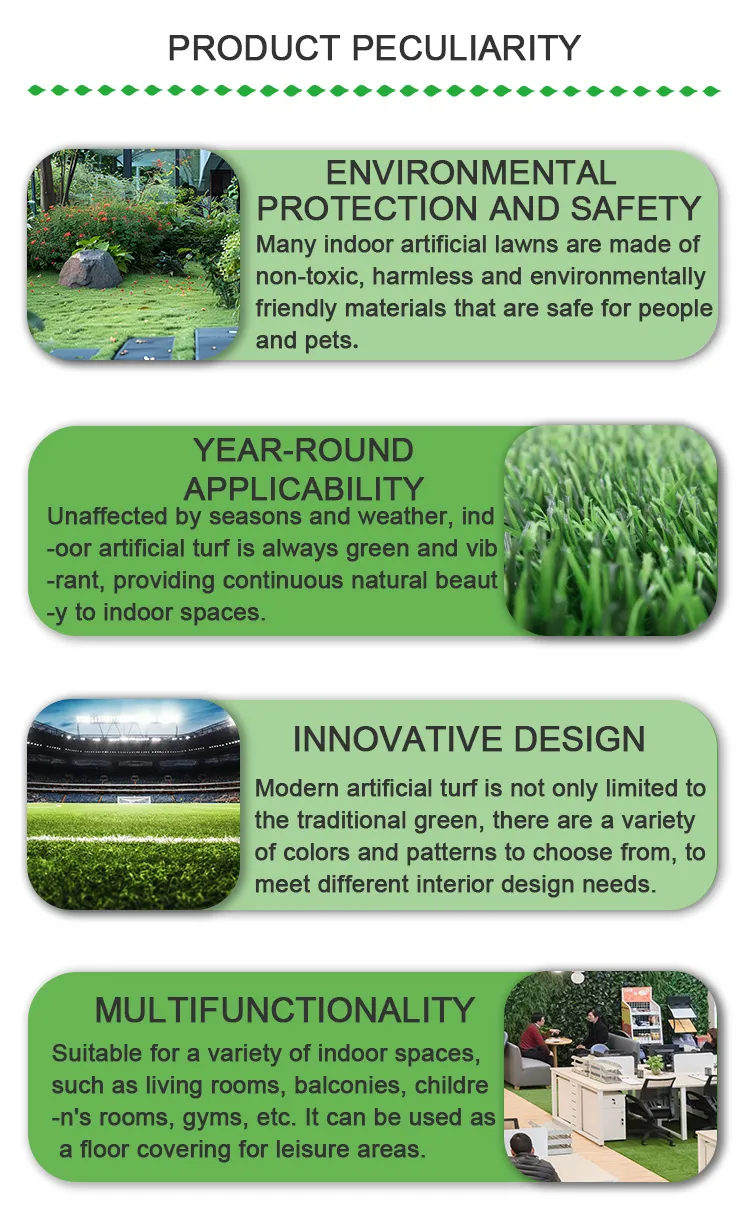
- Afrikaans
- Arabic
- Belarusian
- Bengali
- Czech
- Danish
- Dutch
- English
- Esperanto
- Estonian
- Finnish
- French
- German
- Greek
- Hindi
- Hungarian
- Icelandic
- Indonesian
- irish
- Italian
- Japanese
- kazakh
- Rwandese
- Korean
- Kyrgyz
- Lao
- Latin
- Latvian
- Malay
- Mongolian
- Myanmar
- Norwegian
- Persian
- Polish
- Portuguese
- Romanian
- Russian
- Serbian
- Spanish
- Swedish
- Tagalog
- Tajik
- Thai
- Turkish
- Turkmen
- Ukrainian
- Urdu
- Uighur
- Uzbek
- Vietnamese
pet friendly turf infill
Dec . 07, 2024 06:37 Back to list
Choosing Pet-Friendly Turf Infill A Guide for Pet Owners
As more pet owners seek to create pet-friendly outdoor spaces, the popularity of artificial turf has skyrocketed. However, one crucial element that often gets overlooked is the infill material used in these synthetic grass installations. With pets in mind, selecting the right infill can enhance your turf's functionality and ensure a safe environment for your furry friends.
Understanding Turf Infill
Infill refers to the material placed between the blades of synthetic grass. This substance serves several essential purposes it provides stability and weight to the turf, helps the grass blades stand upright, and improves drainage. Various types of infill are available, ranging from rubber to sand to organic materials. For pet owners, choosing a pet-friendly infill is imperative to ensure safety and comfort for their pets.
Common Types of Pet-Friendly Infill
1. Natural Infill Made from organic materials like coconut, cork, or soy, natural infill is an excellent option for pet owners. These materials are biodegradable, non-toxic, and safe for pets. Additionally, natural infill often has antimicrobial properties, reducing the risk of harmful bacteria growing in your turf.
2. Non-Toxic Rubber If you're considering rubber infill, ensure that it's specifically labeled as non-toxic and designed for pet use. High-quality, crumbed rubber is often treated to prevent harmful chemicals and heavy metals from leaching. Non-toxic rubber infill provides great drainage and cushioning, ideal for pets who love to run and play.
pet friendly turf infill

3. Sand Another classic option is silica or other forms of sand. While sand is safe for pets, its characteristics differ from other materials. Sand can provide good drainage, but it may not offer the same cushioning effect as rubber or natural infill. Additionally, sand can be prone to shifting and compacting over time, which may require occasional replenishment.
4. Zeolite This natural mineral is becoming increasingly popular as an infill choice due to its odor-absorbing properties. Zeolite can effectively trap odors from pet urine and reduce the smell in your yard, making it a highly practical option for pet owners.
Benefits of Pet-Friendly Infill
Choosing the right infill not only ensures a safe environment for your pets but also contributes to the longevity and durability of your artificial turf. A proper infill helps prevent matting of the grass blades, which can occur from heavy foot traffic. Moreover, pet-friendly infill materials often promote quicker drainage, eliminating the risk of standing water that could attract pests.
Moreover, if your pet happens to dig or scratch at the turf, non-toxic and organic infills will pose no harm. Whether your dog is running around, playing fetch, or your cat is lounging in the sun, having a safe, comfortable area is essential.
Conclusion
Creating a pet-friendly outdoor space with artificial turf involves careful consideration of the infill material used. By opting for non-toxic and environmentally friendly options like natural infill, non-toxic rubber, sand, or zeolite, pet owners can ensure a safe, functional, and enjoyable environment for their beloved companions. Investing time in understanding the various infill types will ultimately lead to a happier and healthier outdoor experience for both pets and their owners. With the right choices, your artificial turf can become the perfect playground for your pets, offering them comfort and safety while you enjoy peace of mind.
-
The Benefits of Artificial Turf for Indoors
NewsJul.15,2025
-
How Artificial Grass Suppliers Ensure Quality Products
NewsJul.15,2025
-
Artificial Grass and Pets: A Space for Relaxation
NewsJul.08,2025
-
Balcony & Outdoor Decoration with Artificial Grass
NewsJul.08,2025
-
Best Indoor Artificial Grass for Home
NewsJul.07,2025
-
Best Pet Turf for Dogs: Safe & Durable Artificial Grass Options
NewsJul.07,2025
Products categories









